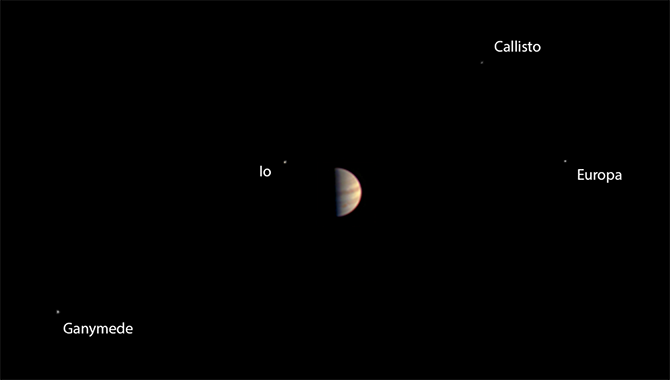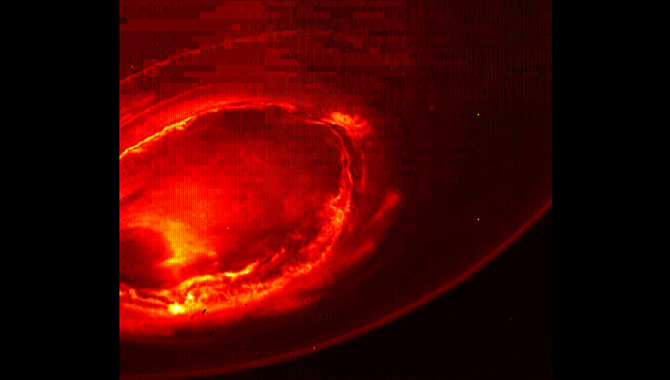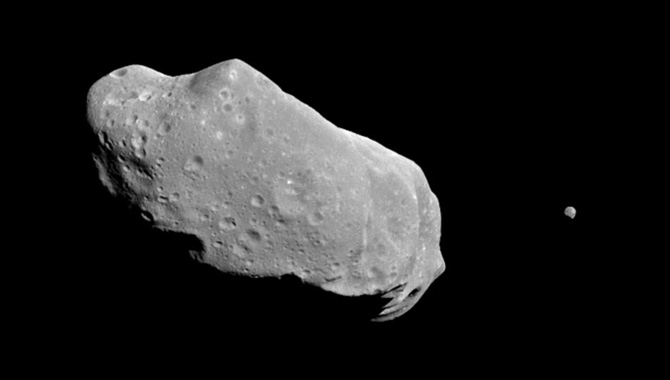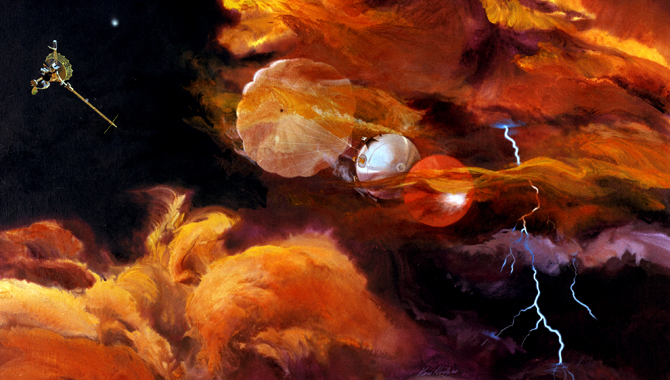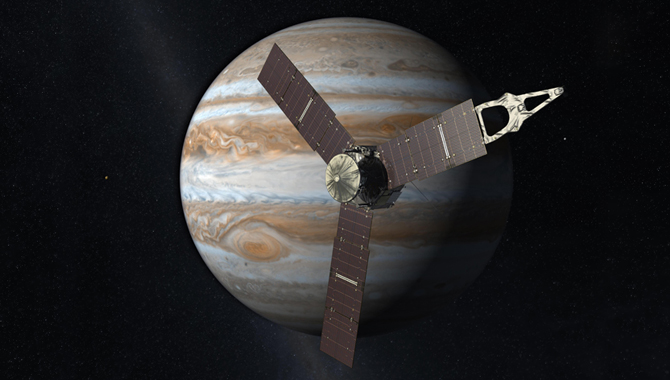
This artist’s concept depicts the Juno spacecraft and its target, Jupiter. The mission will provide new insight into the formation and evolution of the gas giant as well as the solar system overall.
Image Credit: NASA/JPL
On Independence Day, NASA’s Juno mission will begin uncovering Jupiter’s secrets to help scientists learn more about the evolution of the planet and our solar system.
Jupiter consists primarily of gases: hydrogen and helium. This composition suggests that the planet was formed early in the genesis of the solar system, before solar winds dispersed the lighter elements. As a result, Jupiter likely influenced the formation and orbits of subsequent planets. Learning about Jupiter could therefore provide key information about the evolution of the solar system.
Juno, a NASA New Frontiers mission—like New Horizons, which conducted the first flyby of Pluto a year ago—is designed to shed new light on Jupiter’s atmospheric composition, gravitational and magnetic fields, and polar magnetosphere and auroras. Its science instruments will provide data to help answer such questions as how the planet was formed, whether it has a solid core, how much water is in its atmosphere, how its mass is distributed, and what causes the dynamic auroras at its poles. Juno will also uncover information about Jupiter’s winds, which can travel more than 600 kilometers per hour.
Eight spacecraft have visited Jupiter in the past, and images from the Hubble Space Telescope have proffered key information about the gas giant as well. But Juno, the second long-term mission to the planet, will provide unique perspective and novel insight. To collect data, the spacecraft carries nine science instrument packages. A gravity science system will study the gravitational field to help reveal the internal structure of the planet. A Microwave Radiometer (MWR) will also examine the planet’s structure, which is hidden beneath its perpetual cloud cover, to determine the amount of water and ammonia in its atmosphere. The vector magnetometer (MAG) will measure the magnetic field in order to develop a detailed, three-dimensional map of the magnetic environment. The Jovian Auroral Distributions Experiment (JADE), Jupiter Energetic-particle Detector Instrument (JEDI), and Ultraviolet spectrometer (UVS) will work together to examine the particles and processes that form Jupiter’s striking auroras. A plasma waves instrument (Waves) is designed to measure the radio and plasma waves in Jupiter’s atmosphere to better understand interactions between the magnetic field, magnetosphere, and atmosphere. Finally, the Jovian Infrared Auroral Mapper (JIRAM), consisting of an infrared imager and spectrometer, will provide high-resolution images of the polar aurora and atmospheric dynamics, while JunoCam (JCM), a visible-spectrum camera, will deliver full-color images of the atmosphere to be used for education as well as scientific studies conducted by students.
The mission has taken precautions to protect its payload from Jupiter’s notorious radiation belts. Following a highly elliptical orbit, the spacecraft will approach over the north pole, move in beneath the belts, and then exit over the southern region, avoiding most of Jupiter’s high-radiation areas and minimizing total radiation exposure. In addition, the Juno Radiation Vault, which features one-centimeter-thick titanium walls, will help shield the spacecraft’s electronics.
Launched on August 5, 2011 from Cape Canaveral atop an Atlas V-551, Juno is the first solar-powered mission to operate around an outer planet. While solar arrays are frequently used to power Earth-orbiting satellites and missions to the rocky inner planets, previous missions to Jupiter and beyond have relied on nuclear power to travel so far from the sun. Juno, utilizing cutting-edge technology, is breaking new ground with its energy-efficient instruments and spacecraft, plus a mission design that avoids Jupiter’s shadow. The four-ton spacecraft sports three 30-foot solar arrays, home to 18,698 solar cells, which will generate 500 watts as the spacecraft travels around Jupiter. On January 13, 2016, Juno broke the record to become the most distant solar-powered spacecraft.
In just a few weeks, on July 4, 2016, Juno will be inserted into Jupiter’s atmosphere following a 35-minute burn of the spacecraft’s main engine. It will then spend nearly two years orbiting the gas giant. Each polar orbit will last 14 days, bringing the spacecraft within 5000 kilometers of the planet’s dense cloud tops. Over the course of the mission, Juno will conduct 32 orbits before burning up in the Jovian atmosphere to avoid any risk of contaminating Jupiter’s moons, some of which appear to harbor the potential to support life.
Juno is managed by the Jet Propulsion Laboratory (JPL). The mission’s principal investigator is Scott Bolton of Southwest Research Institute (SwRI) in San Antonio, Texas. The spacecraft was built by Lockheed Martin Space Systems as part of NASA’s New Frontiers Program, which is managed at Marshall Space Flight Center (MSFC).
Learn more about the Juno mission.
Watch the launch of Juno on August 5, 2011, from Cape Canaveral, FL.






